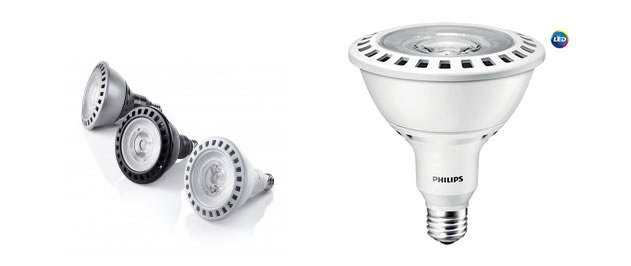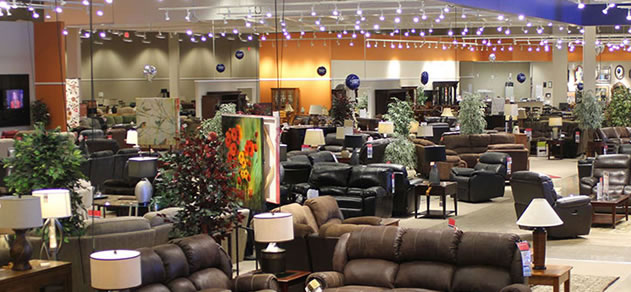 |
|
Gardner-White cuts back on energy costs with the aid from Philips lighting and financing solutions. (All Photos Courtesy of Philips) |
“With the switch to Philips LEDs, we are seeing a noticeable improvement in the store, from how the furniture looks, to how comfortable our customers and staff are while shopping, to our operating budget,” said Tronstein. “We are amazed that such a simple switch can have such a powerful and lasting impact on our business and the environment.”
Gardner-White
To remain competitive in the furniture business, Gardner-White focuses on its customer experience, offering impeccable service, an inviting ambience, and high-quality products, while looking for new ways to operate more efficiently.
One challenge for the company, though, was to continue meeting its high standards for service and selection amid rising energy costs. Gardner-White used nearly 2,000 75-watt halogen lamps at each of its eight stand-alone stores to light the showroom and spotlight its furniture for 12 hours per day, seven days a week. Not only did this result in excessive energy consumption, it also put an enormous strain on Gardner-White’s operating budget.
In addition, the steady burning of thousands of halogen lamps created sweltering heat in the stores. To maintain a temperate climate, Gardner-White was forced to operate air conditioning systems for six months a year, further stretching its resources and impact on the environment.
Aside from the environmental and financial effects, the halogen bulbs burned out frequently and Gardner-White required a steady stream of in-store labor to replace the lamps and maintain consistent lighting in the stores.
The Solution
Gardner-White compared several LED products and selected light-emitting diode (LED) technology from Philips Lighting. The Philips 19-watt Single Optic AirFlux LEDs offered the best quality of light, maximum performance, and superior visual comfort. With its smooth white design, the Philips AirFlux LEDs deliver increased candle power that allows Gardner-White to showcase its furniture without emitting heat.
Philips 19-watt Single Optic AirFlux LEDs
 |
|
Philips 19-watt Single Optic AirFlux LEDs used in the Gardner-White lighting project. (All Photos Courtesy of Philips) |
In addition, Gardner-White used Philips Lighting Capital to help finance the project. Through a unique comprehensive financing program, Philips helped Gardner-White calculate anticipated monthly energy savings and structure a payment program that allows the company to break even or even generate positive cash flow.
“When we saw the Philips LED lamps, we knew they were the right choice for us. Plus, no other vendor offered a financing component that helped support the sale of the lamps,” said Rachel Tronstein, vice president of Gardner-White. “Thanks to Philips Lighting Capital, we were even more thrilled about our decision because we could make this change immediately, with no upfront costs.”
Over a one-month period, Gardner-White replaced over 10,000 lamps in its eight standalone showrooms. By increasing the light temperature from 2,700K to 3,000K as well as resetting their track head fixtures Gardner-white was also able to reduce the number of lamps from over 10,000 to 8,700, reducing the total count by 20% which is an additional cost savings.
 |
|
The Gardner-White furniture exhibition room after the LED upgrade. |
The lamps blend seamlessly into the existing fixtures and allow Gardner-White to keep the spotlight on its furniture. From day one, employees noticed how the LEDs showed the true fabric colors and highlighted the rich patinas of the wood finishes. Employees and customers alike can now make furniture and color selections with greater confidence by seeing the real colors and textures of each piece.
In addition, the employees noticed a significant difference in showroom temperatures and have an easier time conversing with customers without air conditioners churning in the background.
 |
|
LED lights helped Gardner-White save up US $92,000 in energy and related utility costs. |
Gardner-White has reaped significant benefits on its operating budget, as well. With the pure reduction from 75 to 19 watts across 8,700 lamps, the company expects substantial reductions in energy costs in the six digits. In addition, Gardner-White utilized a local utility rebate for an additional $92,000 in savings. Finally, by not having to offset the halogen heat with excessive air conditioning, the company expects additional tangible energy savings. As a result, Gardner-White expects a return on investment for the lamp replacements within just one year.
In addition, by reducing energy consumption, the switch to LEDs is estimated to eliminate over 3.2 million pounds annually in CO2 emissions, equivalent to taking 1,700 cars off the road each year.*
“With the switch to Philips LEDs, we are seeing a noticeable improvement in the store, from how the furniture looks, to how comfortable our customers and staff are while shopping, to our operating budget,” said Tronstein. “We are amazed that such a simple switch can have such a powerful and lasting impact on our business and the environment.”*
* Based on a reduction of wattage from 75 to 19, resulting in a savings of 11.6 million KWH per year, according to U.S. EPA calculator















